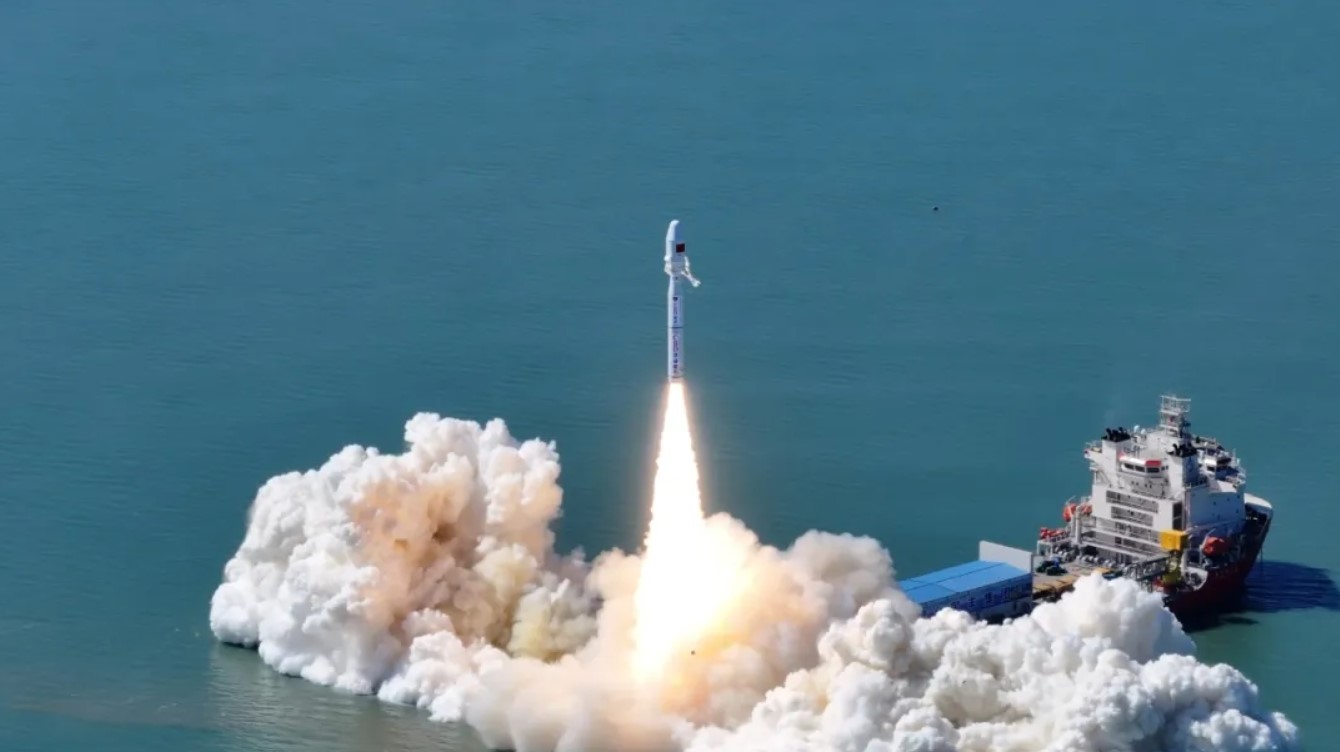HELSINKI — China launched its fourth Jielong-3 solid rocket from a sea platform late Monday, putting eight remote sensing satellites into sun-synchronous orbit.
The fourth Jielong-3 (Smart Dragon-3) lifted off at 10:31 p.m. Eastern, Sept. 23 (0231 UTC, Sept. 24) from a specially converted sea platform off the coast of Haiyang city, in the Eastern province of Shandong.
China Rocket, a subsidiary of CASC, the country’s state-owned main space contractor, announced the mission payloads following launch success. The launch was a rideshare mission and featured a diversity of satellites and customers.
Aboard the launch was Tianyi-41 for Spacety, Xingshidai-15, -21, and -22, developed by ADA Space, full name Chengdu Guoxing Aerospace Technology Co., Ltd., in collaboration with various technological partners; Fudan-1 for Fudan University, an Earth observation satellite; Tianyan-15 (Final Frontier-1 (01)) developed by Final Frontier (Zuijian Qianyuan Aerospace Technology Co., Ltd); and Yuxing-2 (05) for Beijing Aerospace Yuxing Technology Co., Ltd, a remote sensing satellite. The final payload was Jitian Star A-01 for Suzhou-based Jitian Xingzhou.
One of these payloads, likely Yuxing-2 (05), also carries the name Luojia-4 (01), and was developed by HITSAT, Harbin, and Wuhan University. Many Chinese satellites carry more than one name due to sponsorships or collaborations, allowing them to serve multiple projects simultaneously.
Jielong-3 is a four-stage rocket. It has a length of approximately 31 meters, a weight of 140 tons at liftoff, and a payload capacity of 1,500 kg to a 500 km Sun-synchronous orbit.
The Dongfang spaceport was developed to provide new launch opportunities for commercial launches, while offering the flexibility of sea launches. The first launch, in 2019, involved a Long March 11 solid rocket.
The spaceport has since hosted Jielong-3, Ceres-1 and Gravity-1 solid rockets. It may host liquid propellant launchers in the future.It operates under the jurisdiction of Taiyuan Satellite Launch Center in northern China.
China Rocket was founded in 2016 as part of CASC’s ambitions to commercialize space launch services. It is also part of a wider push for commercial launch in China.
The launch was China’s 44th launch of 2024. It follows a pair of launches Sept. 20, involving Long March 2D and Kuaizhou-1A launches from Taiyuan and Xichang spaceports respectively. CAS Space, a spinoff from the Chinese Academy of Sciences, is expected to launch a Lijian-1 solid rocket—similar in dimensions and capabilities to the Jielong-3—later Sept. 24.
CASC stated early this year that it aimed to launch around 70 times across, with commercial companies planning a further 30. So far, commercial players have launched just seven times, and CASC 38 times, including Jielong-3 launches.
In a Sept. 24 statement, CASC said it plans to conduct more than 20 launches before the end of the year. These include the Shenzhou-19 crewed and Tianzhou-8 cargo missions to Tiangong space station.



